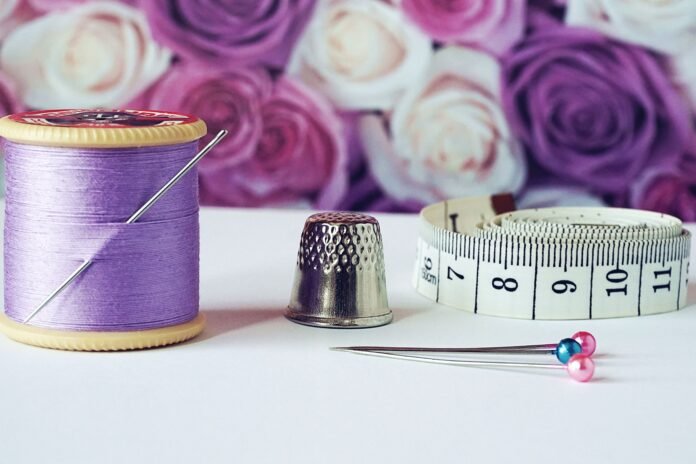There are causes in the world that need attention and support. Many people today are using fashion to not only express their own style, but also to support social causes they care deeply about. Through the creative power of collaborations and special collections, different brands are coming forward to offer their support to various social causes. Let us explore the fashion empowerment which is taking the world by storm.
1. The Power of Fashion: Uniting Brand and Social Cause
Fashion is an incredibly powerful tool for bringing social causes to the forefront of the collective consciousness. More and more brands are blending social advocacy and style in what is becoming a vivid, powerful combination. Major fashion houses are teaming up with nonprofit organizations, fashion magazines are raising awareness with campaigns, and influential influencers are diving in to advocate for causes close to their hearts. Not only do these kinds of initiatives create buzz and generate awareness, but they often directly help the cause as well.
The sheer power of the fashion industry can help leverage resources to help a cause gain more traction, leading to true, long-term impact. For example, Prada recently partnered with Save The Children to launch the ‘Step Up’ project; a program emphasizing education and equal opportunity for girls and young women in Ethiopia. In Prada’s 2019 spring campaign featuring actress Emma Hoareau, the company made a direct donation to the cause.
Brands are also committing to advocating a variety of causes with their work. La Petite Boheme has approached animal welfare in a strong and creative way, as a result of the founder’s passionate about animal rights. The accessories brand creates products that tell stories and invites people to join their journey of making animal welfare a priority.
At the same time, athletes are joining the mix, teaming up with other familiar names in fashion and philanthropy to combine style, promotion, and social justice. The basketball superstar LeBron James, for example, recently partnered with the Calvin Klein foundation to donate 2 million dollars to America’s youth-focused organizations. The effort is part of a larger initiative, Plus1, which helps to promote and defend the rights of young people.
To sum up, the worlds of fashion and social advocacy are coming together bringing innovative solutions to the table. As these initiatives continue to gain popularity, more people and organizations can join forces and create powerful movements that will shape our world for the better.
- Prada’s 2019 spring campaign featuring actress Emma Hoareau, made a direct donation to the cause.
- La Petite Boheme creates products that tell stories and invites people to join their journey of making animal welfare a priority.
- LeBron James, recently partnered with the Calvin Klein foundation to donate 2 million dollars to America’s youth-focused organizations.
2. A Shift Towards Fashion Empowerment
The past few years have seen a huge shift towards recognising the power of fashion as not just an industry, but a form of self-expression. Women are no longer content with wearing clothes that just look nice, but instead want to be empowered and make a statement with their fashion choices. Here are some of the ways fashion has become a tool of empowerment:
- Celebrities and Influencers: Celebrities and influencers are setting the tone when it comes to fashion trends. They are inspiring women to push the boundaries and have their own sense of style. We have gone from celebs wearing dresses that fit the cookie-cutter image to daring and edgy looks – and women are loving it!
- Body positivity: People of all shapes and sizes are feeling empowered to express themselves through fashion, because of recent body positivity movements. Women are now wearing clothes that highlight their bodies in an empowering way, with no fear of judgement.
- Rise of Sustainable Fashion: Sustainable fashion has also surged in popularity in recent years, allowing people to use their fashion choices to make a statement about protecting the environment. Eco-friendly clothes, fabrics and other materials are becoming increasingly available, and people of all styles can find something to help them become more sustainable.
- Celebration of Diversity: Diversity in fashion has also led to an increase in empowerment. Shop owners, fashion designers, and influencers alike are embracing all types of models and shapes, from tall to short, curvy, to petite. This recognition and celebration of beauty helps many people feel validated and build a sense of self-confidence.
These are only a few of the ways fashion has become a source of empowerment for women. With clothing being available in all shapes, sizes, materials, and colors, it’s an incredibly powerful way to show the world what you stand for. Whether it’s sustainability, body positivity, or diversity – fashion has the capability to be a tool of self-expression and self-confidence.
In today’s society, fashion has become an incredibly important tool for making a statement about who you are and what you stand for. Women are no longer content with trudging along, but instead using fashion to stand up for what they believe in and live their own truth.
3. Best Practices for Supporting Social Causes through Fashion Brands
The connection between fashion and social causes is not a new concept. In fact, it has become something of a trend in the fashion industry to support global issues. However, the success of these efforts hinges on how companies and designers go about it. Here are some of the best practices for using fashion to support social causes.
- Know the Cause: There are many worthy causes out there, but it’s important to do your research and find out which cause speaks to you and your company. It’s important to have a vision and a deeper understanding of the cause you are trying to support.
- Be Authentic: It’s important to be genuine in your support of the cause. If you are not truly connected to the cause, your efforts will not come across as genuine and people will not be as receptive to your message.
One of the biggest mistakes fashion brands make when trying to support social causes is not providing a sense of transparency. Don’t be afraid to be vocal and open about your efforts. Let people know how and why you are trying to help. Let them in on what your vision is and how they can help.
Another great way to show support for a cause is to get involved on the ground as well. Participate in events, fundraisers, or volunteer projects associated with the cause you are showing support for. This will show people what kind of a company you are and will also get your employees and members of the community involved.
Finally, make sure your efforts are ongoing. Your support for a cause should not be a one-time campaign, but something that is part of your company’s mission and long-term strategy. Show that you are invested for the long haul and your efforts will be noticed and appreciated.
4. Charting the Path of Social Impact through Fashion
Invisible Impact of Clothes
It’s no secret that fashion has far-reaching implications beyond the expressive and aesthetic. Clothes carry with them tremendous power, often in stealthily invisible ways. The humble garment can shape the way we perceive ourselves and each other, our behaviors, and our interactions. On a global level, fashion can dictate the livelihoods of communities, including those in the production and distribution chain. It may even strike the proverbial iron in global politics, industry, and major events.
Harnessing the Power of Fashion for Good
What if we were to flip this paradigm, and repurpose fashion for social good, rather than inadvertently sanctioning labor exploitation and inequities? This is the fundamental question explored by the concept of fashion social impact. This powerful tool focuses on pressing global issues, harnessing the resources of the fashion industry – from entrepreneurs to companies – to drive social change and awareness.
This creative approach can be adapted across a wide spectrum of social issues. From upcycling garments to reduce technology waste, to manufacturing eco-responsible apparel, to leveraging “buy one, give one” type models for access to education and healthcare, it’s a way to shape the future of the fashion industry, and by extension, the planet.
The Right Attitude and Strategies for Social Impact
At the heart of driving social impact through fashion lies the approach of one’s mindset. It’s about the power of intentional steps, driven by the collective will to achieve positive change. Here, mindful decision-making is key. This includes conscious consumption, making a conscious effort to understand the raw materials (and how/where they came from) and the manufacturing process, as well as the working conditions along the way.
Understanding the ROI of Fashion Social Impact
Return-on-investment (ROI) is an important element of fashion impact. From the perspective of both supply and demand, it’s crucial to take stock of the economic impact of fashion. This means cultivating an analytical approach that acknowledges the wider implications of fashion in economic and ecological terms. Depending on the scale and scope of social objectives involved, knowing the outcomes and return of investment is an important factor that should always be weighed.
Conclusion
Overall, in the same way that fashion embodies culture and identity, it can also carry the potential to be a powerful vehicle for driving solutions that positively impact inequalities in the fashion industry and around the world. Leveraging fashion for social impact may be an act of reclaiming the industry, and pioneering it to lead the way in a more sustainable, equitable, and just future.
5. Crafting a Sustainable Future with Empowered Fashion
It’s no secret that the fashion industry can be unsustainable. Overproduction, pollution, irresponsible use of materials, exploitation of labour, resource depletion… the list goes on. But through empowered fashion, we can craft a sustainable future that respects both the environment and the workers.
Firstly, we need to ensure that the production of clothing is done responsibly. This means ensuring fair wages in factories, reducing fabric wastage, improving the lifespan of clothing and switching to organic and non-toxic materials if possible. It’s important to also consider the impact of shipping and packaging, as well as the resources used to create these materials.
Secondly, sustainable fashion encourages consumers to purchase better quality clothing. By investing in fewer items that are better made, consumers can enjoy better fit and longer-lasting pieces. This helps to reduce the environmental footprint from unnecessary purchases of cheaper goods.
Thirdly, consumers can look out for brands that are taking a stand on important social and environmental issues. From safe working conditions and water conservation to deforestation and climate change, these brands are working towards building a brighter future. Consumers can choose to make meaningful purchases that will make a positive impact in the world.
Finally, the fashion industry can be more transparent about their supply chains. By providing more information about where and how their apparel is made, consumers can be sure that they are making informed decisions and investing in companies that are truly striving to make a difference.
- Ensure responsible production
- Purchase better quality clothing
- Look for brands taking a stand
- Create transparency around supply chains
Empowered fashion is about more than just looking good – it’s a powerful force for change that can help us craft a more sustainable future. By making responsible decisions and investing in brands that commit to sustainability, consumers can help to bring about a better and brighter world.
Fashion empowerment is more than an up-and-coming trend—it’s a movement that will undoubtedly become a life-changing force in years to come. By supporting social causes, brands are uniting with advocates to make a tangible difference. Together, we can be the light that guides us into a brighter, more inclusive future.




